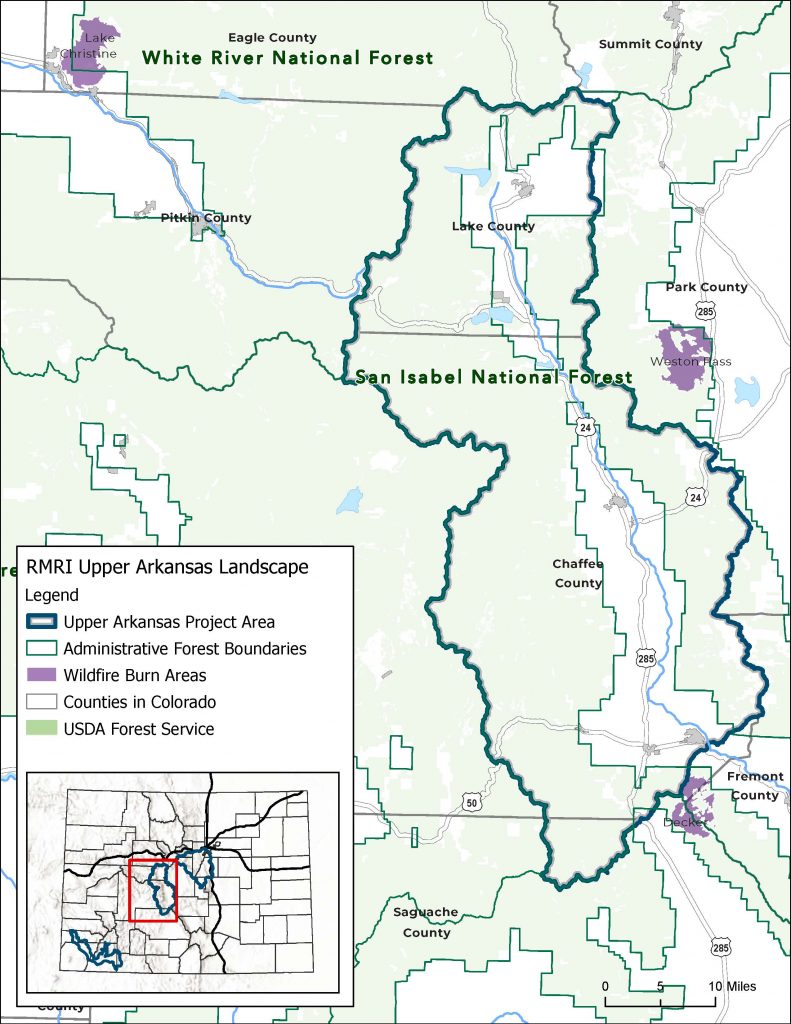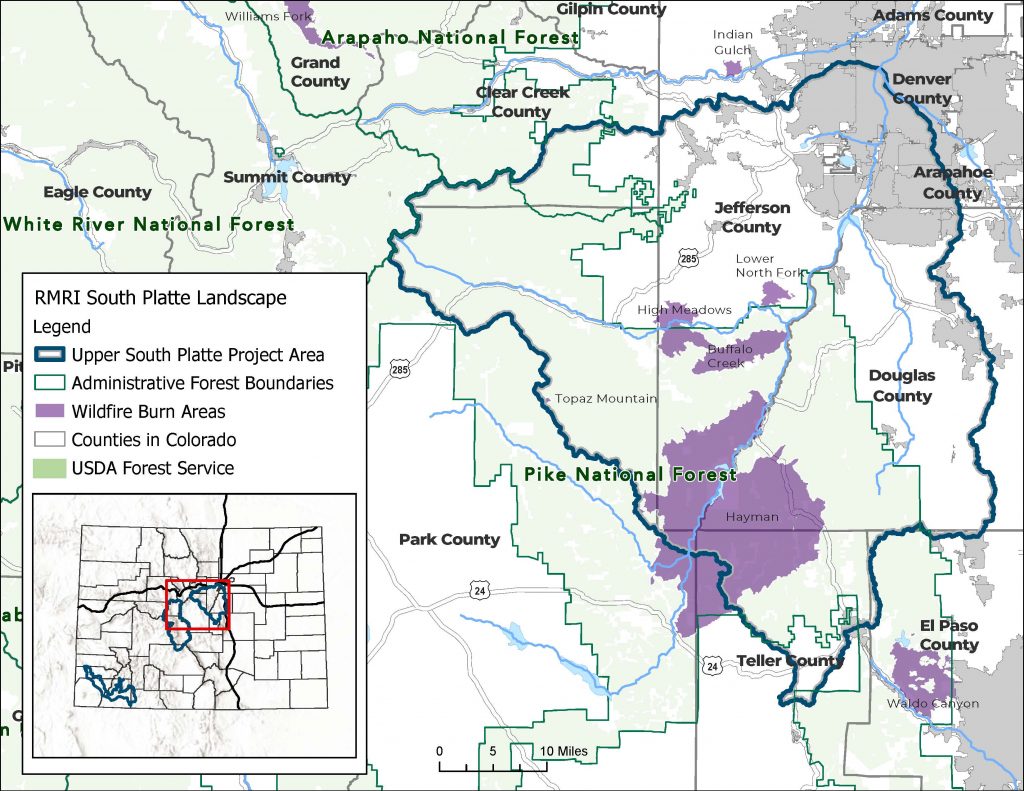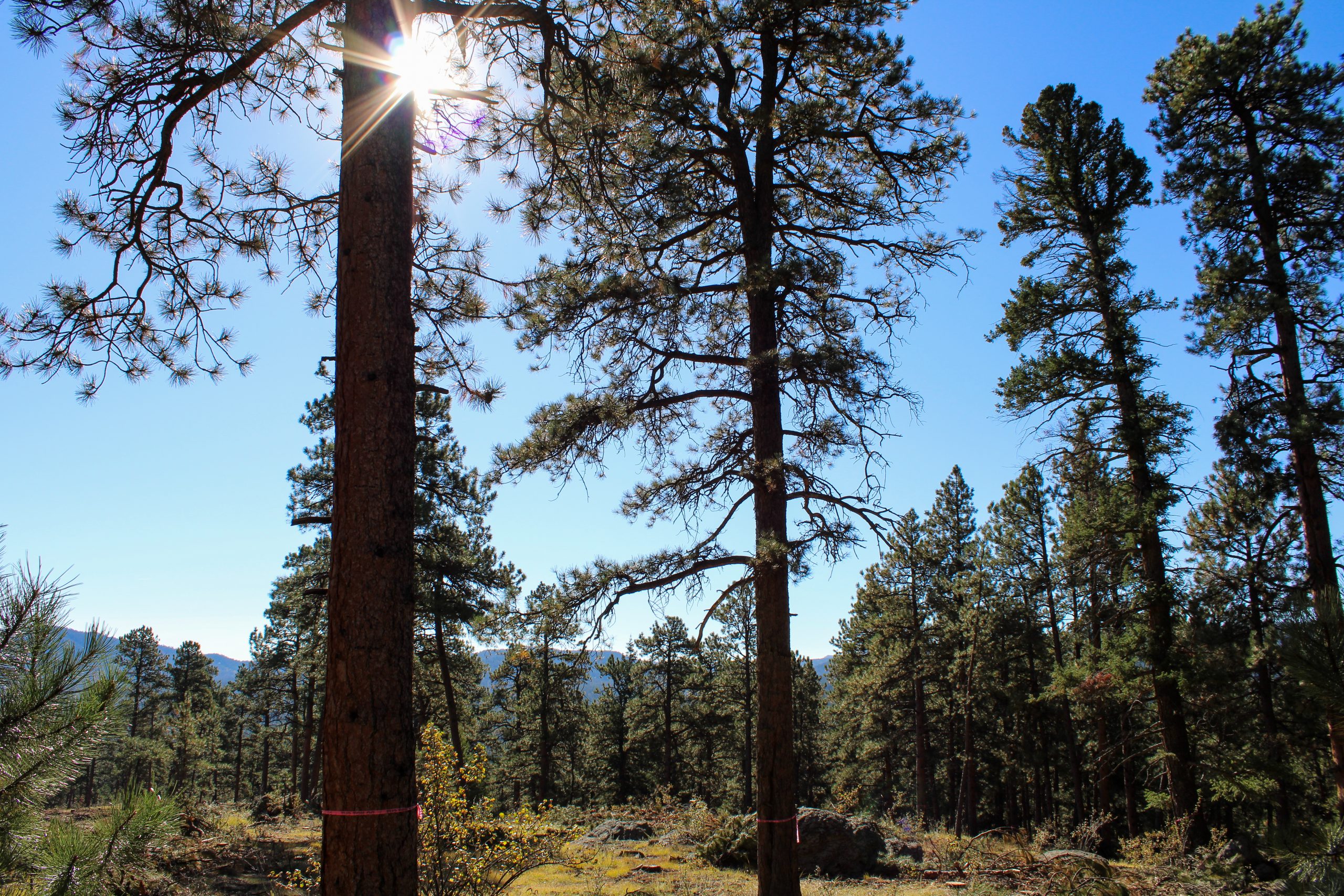Highlights from the Rocky Mountain Restoration Initiative’s 2023 Efforts
In the face of relentless wildfires, encroaching infestations and unforgiving droughts, the need for cohesive, boundary-defying solutions has never been more pressing. In response to these challenges, the Rocky Mountain Restoration Initiative transcends jurisdictional lines and property boundaries to forge a unified front against increasing challenges our nation's forests and watersheds face.
Co-convened by the National Wild Turkey Federation and the USDA Forest Service, RMRI was conceived as a testament to the power of shared stewardship. Initiated in 2019 with Colorado as its pilot location, RMRI has blossomed into a cornerstone of restoration efforts across the Rockies.
RMRI's approach is as bold as it is pragmatic. By rallying partners from federal, state, tribal and local jurisdictions, RMRI catalyzes a transformative shift in how we approach forest restoration. Together, these partners chart a course toward a future where large-scale landscapes are revitalized, not through fragmented efforts, but through concerted, coordinated action.
Partners have set goals to restore landscapes in three focal regions: Southwest, Upper Arkansas and Upper South Platte. By 2030, ambitious restoration targets have been set: 310,000 acres in the Southwest, 30,000 acres in the Upper Arkansas and 75,000 acres in the Upper South Platte. These goals aim to restore both public and private lands across the Rockies.
Southwest Colorado

In the Southwest region of Colorado, over 40 partners spanning various jurisdictions have committed to treating a total of 20,000 acres of private lands and 290,000 acres of federal lands over the course of the next decade.
To date, the RMRI and its collaborative partners have successfully restored 83,123 acres of land in the Southwest region. This accomplishment signifies a significant milestone, marking 27% progress toward an overarching goal of restoring 310,000 acres of public and private lands within a 10-year timeframe.
In 2023, RMRI honed in on two pivotal focal areas within the Southwest landscape. The first, La Plata County/Upper Florida, serves as a focal point for ground-level endeavors aimed at mitigating wildfire threats, enhancing recreational opportunities and safeguarding crucial watersheds. Meanwhile, the North Mancos/Chicken Creek corridor united the communities of Mancos and Dolores to confront high wildfire risks, critical water infrastructure needs, and vital recreational and wildlife values in a high-priority watershed area. For a deeper dive into the specific projects and partnerships driving these transformative efforts, review the Southwest section of the 2023 RMRI Fact Sheet.
Upper Arkansas

Home to Colorado’s largest river basin, the Upper Arkansas landscape encompasses Chaffee and Lake counties. In these counties, partners are working collaboratively to make a suite of interconnected projects and are leading community preparedness.
In 2023, Chaffee County made significant strides in addressing wildfire risk and promoting forest health through a series of comprehensive initiatives. The Community Wildfire Protection Plan identified critical areas for treatment to mitigate the risk of wildfire damage to the community. Led by the Forest Health Council, comprised of professionals from various land management agencies, the plan has seen substantial progress. According to the Forest Health Council’s CWPP Community Annual Report, a record-breaking 5,000 forested acres of public and private lands were treated in 2023, bringing the total to 10,531 acres over four years, representing 35% progress toward the CWPP's goal of treating 30,000 acres.
Additional accomplishments include low-intensity prescribed burns on over 3,098 acres conducted by the Forest Service, resulting in a record for the Salida Ranger District. The Colorado State Forest Service and Colorado Firecamp expanded staff positions in the Salida Field Office to accelerate multi-property treatment projects through the Chaffee Treats program. This initiative aims to cluster homeowner mitigation efforts to effectively slow wildfire spread and protect community infrastructure. Additionally, the Forest Health Council introduced the Chaffee Chips program, which facilitated the removal of a record 901 slash piles in 2023, enhancing defensible space around homes and structures.
To learn more about the achievements in wildfire mitigation, wildlife conservation and forest management within the Upper Arkansas region, explore the dedicated section within the 2023 RMRI Fact Sheet.
Upper South Platte

The Upper South Platte watershed, serving as a lifeline for the Denver and Aurora metro areas and catering to around 2 million residents, holds immense significance as a critical water source. Despite its vital role, this landscape has faced numerous challenges, including six significant fires in the past 25 years and the presence of 12 wildlife species in threatened or endangered habitats.
Leading the charge in this crucial landscape is the Upper South Platte Partnership, a collaborative effort encompassing government agencies, water providers, nonprofits and academic institutions. Through coordinated treatments and projects across federal and nonfederal lands, RMRI and USPP have made remarkable strides in addressing the region's pressing issues.
Historic investments by the Forest Service in the Colorado Front Range Landscape, overlapping portions of the Upper South Platte landscape, have been bolstered through initiatives like the Wildfire Crisis Strategy. The Colorado Strategic Wildfire Action Program has further supported projects led by the USPP.
The Forest Service, Colorado State Forest Service, Natural Resources Conservation Service and the Colorado Forest Restoration Institute signed Denver Water's Forests to Faucets 3 memorandum of understanding, pledging $2 million for USPP projects from 2022 to 2027. Denver Water has also identified several zones of concern within the Upper South Platte landscape.
Projects in 2023 encompassed a wide array of endeavors, including forest management for catastrophic wildfire reduction, restoration of recreational areas, watershed health improvement, enhancement of wildlife habitat and community safeguarding. In September 2023, the USPP hosted RMRI partners from across Colorado for the annual in-person meeting. During this gathering, partners embarked on tours of project field sites to witness firsthand the progress and accomplishments achieved thus far.
For a comprehensive overview of ongoing and completed projects and other accomplishments in the Upper South Platte landscape, refer to its dedicated section within the 2023 RMRI Fact Sheet.
"Congratulations to all three RMRI landscapes; it’s inspiring to see the work being done and how all the partners worked together to have another phenomenal and successful year," said Liz Dowling, NWTF Rocky Mountain Restoration Initiative coordinator. "I cannot wait for our September meeting and field tour to celebrate and take a look at the Upper Arkansas landscape through a closer lens and see some of the positive impacts on the ground.”
CONNECT WITH US
National Wild Turkey Federation
770 Augusta Road, Edgefield, SC 29824
(800) 843-6983
National Wild Turkey Federation. All rights reserved.
